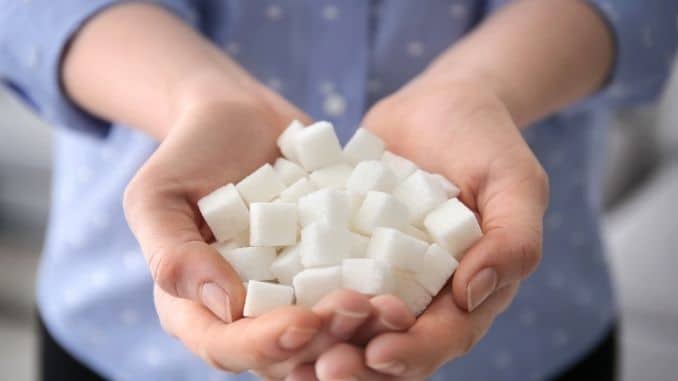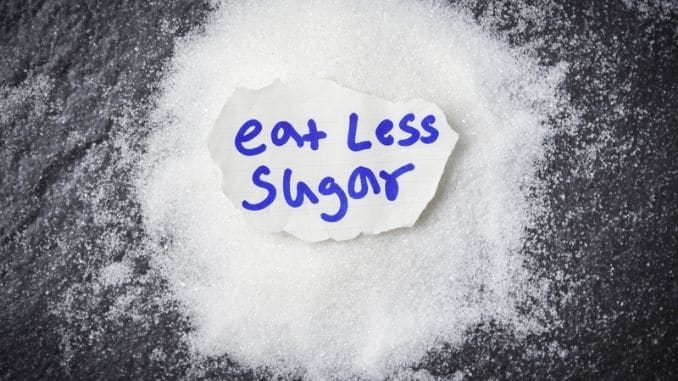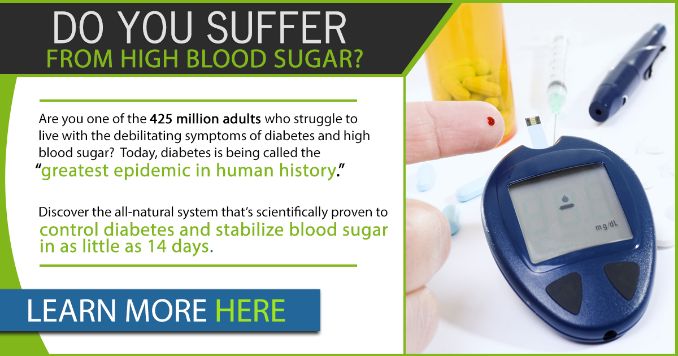It probably won’t surprise you to learn that sugar is the most popular ingredient added to foods in the United States. Over the years, more and more manufacturers have used it to make their foods taste sweeter in the hopes of increasing profits, and so far, it’s worked.
Two hundred years ago, the average American ate only two pounds of sugar a year. In 1970, that had increased to 123 pounds per year, and today, it’s a whopping 152 pounds a year. That’s three pounds a week!
Yet nutritionists advise us to get only about 10 percent of our daily calories from sugar, which adds up to about 13.3 teaspoons a day for the average 2,000 calorie diet. The American Heart Association (AHA) goes even lower, suggesting men consume no more than 9 teaspoons of added sugar per day, and women no more than 6 teaspoons. The current average, by comparison, is about 42.5 teaspoons a day.
Most of us are trying to cut back. We eat one cookie instead of two, use fruit for dessert when we can, and try not to overdo it on the donuts and brownies. But unfortunately, even if you’re seemingly controlling your sweet tooth, you could still be consuming too much sugar in your daily diet.
Food manufacturers are sneaky. They add sugar to foods you would never imagine would have sugar. They do it because they think it makes the food taste better, and that you'll buy more for that reason.
You can put an end to their devious ways by becoming a savvy shopper who knows how to root out hidden sources of sugar.
How Food Manufacturers Fool You Into Eating More Sugar
Turns out there are many ways to add sugar to a food product without necessarily calling it “sugar.” By hiding the source of the sweetness, companies can make you believe a food is lower in sugar than it is, or even that the food is healthy. Here’s what you want to watch out for.
Sugar by a Different Name
Sugar comes in many different forms and has many different names. Look for anything with “ose” at the end of it, like glucose, fructose, maltose, and sucrose. They are all forms of sugar.
Other potential sources of sugar that don’t have “sugar” in the name include:
- Barley malt
- Cane juice crystals
- Corn sweetener
- Dextran, malt powder
- Ethyl maltol
- Fruit juice concentrate
- Maltodextrin
- Panela
- Evaporated cane juice
Sweet Syrups
If you see the word “syrup” in the ingredient list, that’s another sign that there’s added sugar in the product. Watch out for these types:
- Agave nectar
- Carob syrup
- Golden syrup
- High-fructose corn syrup
- Honey
- Malt syrup
- Maple syrup
- Molasses
- Oat syrup
- Rice bran syrup
- Rice syrup
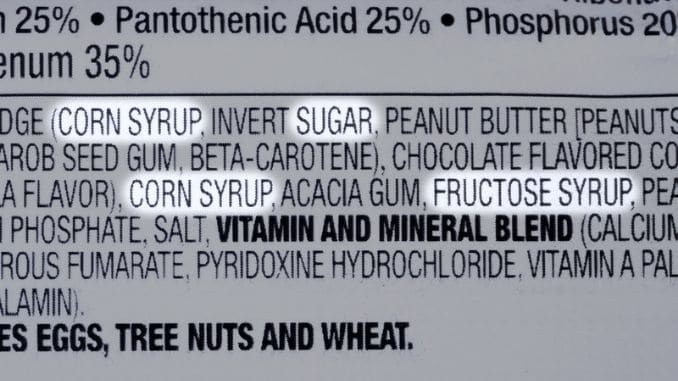 Misleading Labels
Misleading Labels
If the product says something like, “contains no refined sugar” or “refined sugar-free,” take it with a grain of salt. All it means is that the manufacturer didn’t use refined sugar. They may have used another type of sugar, however, which can be just as unhealthy. In the end, sugar is sugar.
Another sneaky tactic is when food manufacturers lump natural sugars and added sugars together into one measurement. Natural sugars are those that naturally occur in the food—such as the lactose in milk—and are usually considered healthier than added sugars, which are added to the food after the fact.
Fortunately, new food labeling standards now require manufacturers to separate the natural sugars from the added ones. Read labels carefully!
The Health Dangers of Too Much Sugar
You may have heard that you can lose weight by cutting back on your daily sugar intake. There are many other reasons to consider taking this step, however.
Studies have shown that excess sugar in the diet is linked with several major health problems.
- Weight gain: This is the one we’re all familiar with. We know if we eat too much sugar we’re likely to gain weight.
- Heart disease: A sugar-laden diet can increase your risk of heart disease, and even of dying of heart disease, according to a 2014 study.
- Type 2 diabetes: Eating too much sugar spikes blood sugar levels, and over time, can create insulin resistance, which leads to diabetes.
- Cancer: Eating too much sugar can lead to obesity, and obesity is linked with an increased risk of several types of cancer. A high-sugar diet can also cause chronic inflammation in the body, which can increase your cancer risk.
- Depression: Those who eat a lot of sugar are more at risk for depression. Scientists believe the sugar triggers mood swings and inflammation, which can negatively impact mental health.
- Aging: Consuming high amounts of sugar has been found in some studies to shorten telomeres, which protect chromosomes from deteriorating. Short telomeres are associated with cellular aging.
- Fatty liver disease: Large amounts of sugar in the diet can strain the liver. Over time, this can cause excess fat buildup in the liver, creating fatty liver disease.
15 Surprising Foods that Contain Sugar
You already know that sugar-sweetened beverages, fruit juices, cookies, cakes, ice cream, candies, and other similar items are typically high in sugar. But other “healthy” foods may also be high in sugar. Always turn the product around and read the nutrition facts on the back to get the real story.
1. Pasta Sauce
It’s spaghetti sauce. It’s made with tomatoes and spices, right? Well, if you’re buying it ready-made from the store, it may also contain a lot of added sugar. Check the stats on the back. Some pasta sauces can contain up to six teaspoons’ worth!
2. Flavored Yogurt
Yogurt is good for you, right? It’s full of friendly probiotics to help maintain a healthy gut. But depending on what kind you buy, it may also be full of sugar. Flavored yogurts are the worst in most cases. Check the label and choose the plain varieties. You can always add in some fruit when you get home.
3. Applesauce
You may expect a little bit of sugar in your applesauce, but you’d be surprised how much some food manufacturers will add. When they do, it makes applesauce more like a dessert than healthy food. Look for unflavored, unsweetened versions.
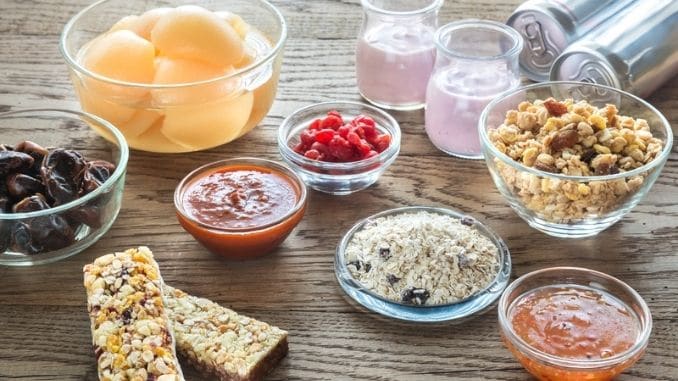 4. Granola Bars
4. Granola Bars
Granola sounds healthy, but companies often add syrups, honey, and other forms of sugar. Some even pile on a sweetened coating. That may taste good, but don’t fool yourself that it’s healthy. Choose plain granola instead.
5. Cereal
Most cold cereals are high in added sugar and don’t deserve to be called healthy breakfast foods. Many have 20 grams (about 5 teaspoons) or more per serving. Even instant oatmeal, which you’d assume would be healthy, usually has 10-15 grams of sugar added.
Choose the old-fashioned oatmeal instead, along with whole-grain cereals with low sugar amounts. (Read the ingredient list to be sure “whole grain” is first.)
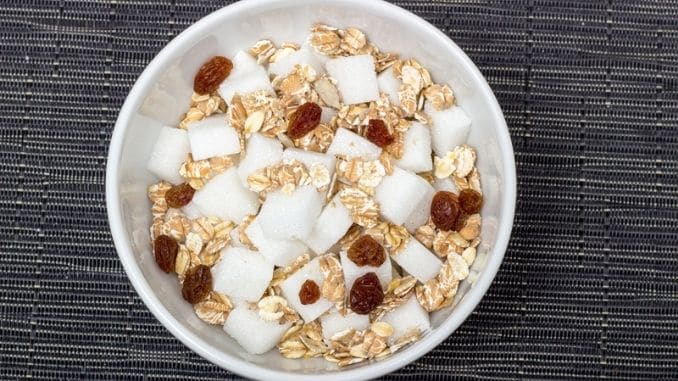 6. Crackers
6. Crackers
You bypassed the cookies and chose crackers for your snack instead. You thought you were doing something good for your health but turn that box around to be sure. Many crackers are too sweet to qualify as healthy snacks. Choose whole-grain types and always read the label.
7. Salad Dressings
This may be the last food you'd expect to be too sweet, but many of them are. Raspberry vinaigrette, French, and Catalina flavors are usually the worst, containing about 5-7 grams per serving. Ranch, blue cheese, thousand island, and others may also be high, though. Look for organic options, as usually, these are lower in added sugars.
8. Nut Butter
They’re usually high in protein and healthy fats, but any nut butter is also high in sugar. Read the ingredients. If you see words like “cane sugar,” “corn syrup,” or “honey,” that means you’re getting one of the sweet ones. Look for natural brands made with nuts only.
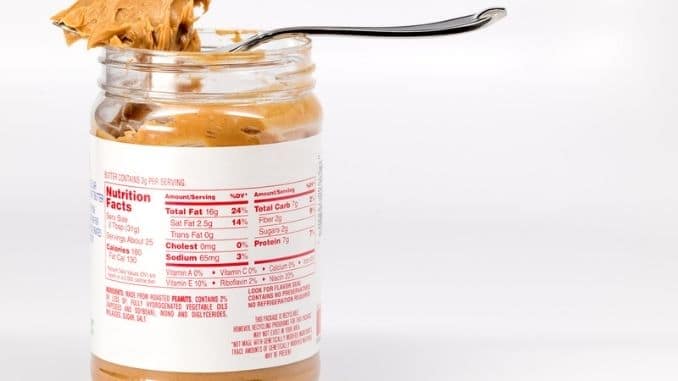 9. Condiments
9. Condiments
Ketchup, barbecue sauce, teriyaki sauce, and other condiments often have added sugar and a lot of it. Finding alternatives can be tough, but they’re out there. Head to your whole foods store for more options.
10. Flavored Coffees and Teas
Coffee and tea are healthy by themselves, and neither has any sugar. Flavored types, however—particularly those you buy at coffee shops or in bottles from the cooler—are usually full of it. In some coffeehouse chains, one flavored coffee can contain 45 grams of sugar. Most commercially prepared iced teas are also likely to contain almost as much sugar as a soda pop.
Choose straight coffee and tea and you’ll be doing yourself a favor. You can also add your own sugar and cream if you like—you’re likely to be a lot lighter-handed than the food manufacturers are.
11. Soups
If you buy canned or boxed soups, always check the label first, as many of these are full of sugar. Keep in mind that naturally occurring sugars, such as those that may be present in some vegetables, are not going to hurt you. Added sugars like sucrose, dextrose, and the like are not good, though.
Most food labels now have to differentiate between the two. Check for “added sugars” and choose soups that have little to none.
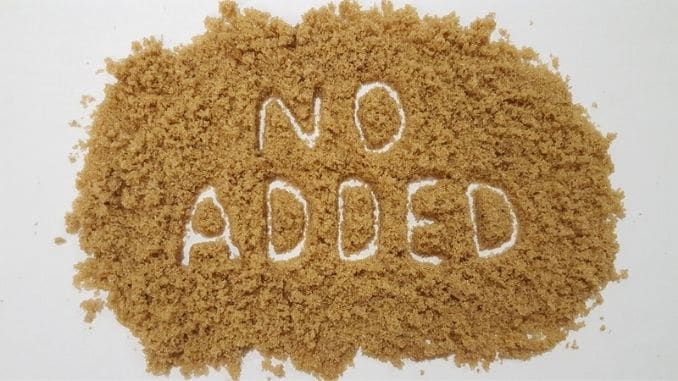 12. Canned Baked Beans
12. Canned Baked Beans
Beans are full of fiber and are usually considered a healthy food, but canned baked beans are often high in sugar, containing up to 5 teaspoons per serving. Choose low-sugar options.
13. Coleslaw
This is the healthy option when you go to the restaurant, right? Not usually. Most that you get at fast-food joints pack about 15 grams of sugar. You can always check the menu online to see what you’re getting, then consider making another choice.
14. Bread
Of all the foods to contain sugar, this one may be one of the most surprising. Look on the label of many store-bought loaves of bread and you'll see sugar listed there—as much as 6 grams per slice in some instances. Look for whole-grain options that contain 2 grams or less per slice.
15. Flavored Water
Understanding the risks of consuming too many soft drinks, people are now turning to flavored water as a “healthier” option. This may not be the solution you hoped for, however. Many flavored bottled water contains added sugars, as much as 3 teaspoons. Use plain water and flavor it yourself with some fruit slices or choose plain sparkling water.
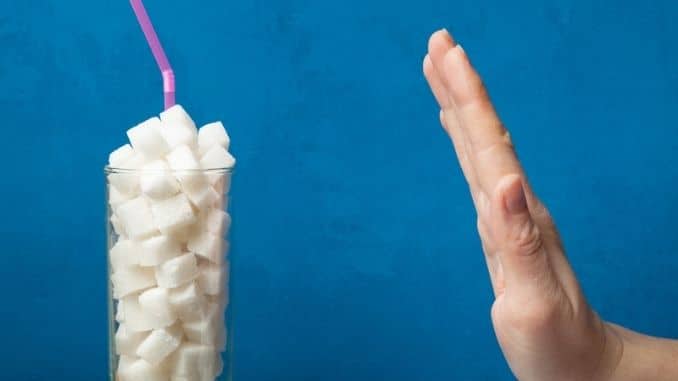
Many people mistakenly believe they have a low-sugar diet because they have eliminated desserts and sweets from their daily nutrition. In most cases, these people would be shocked by the amount of sugar that they are actually consuming. The message is clear – you need to read labels carefully! Better understanding the hidden sources of sugar in your diet is the first step to making informed choices that benefit your health.
Learn about the all-natural system for lowering your blood sugar. Click here for more info.


